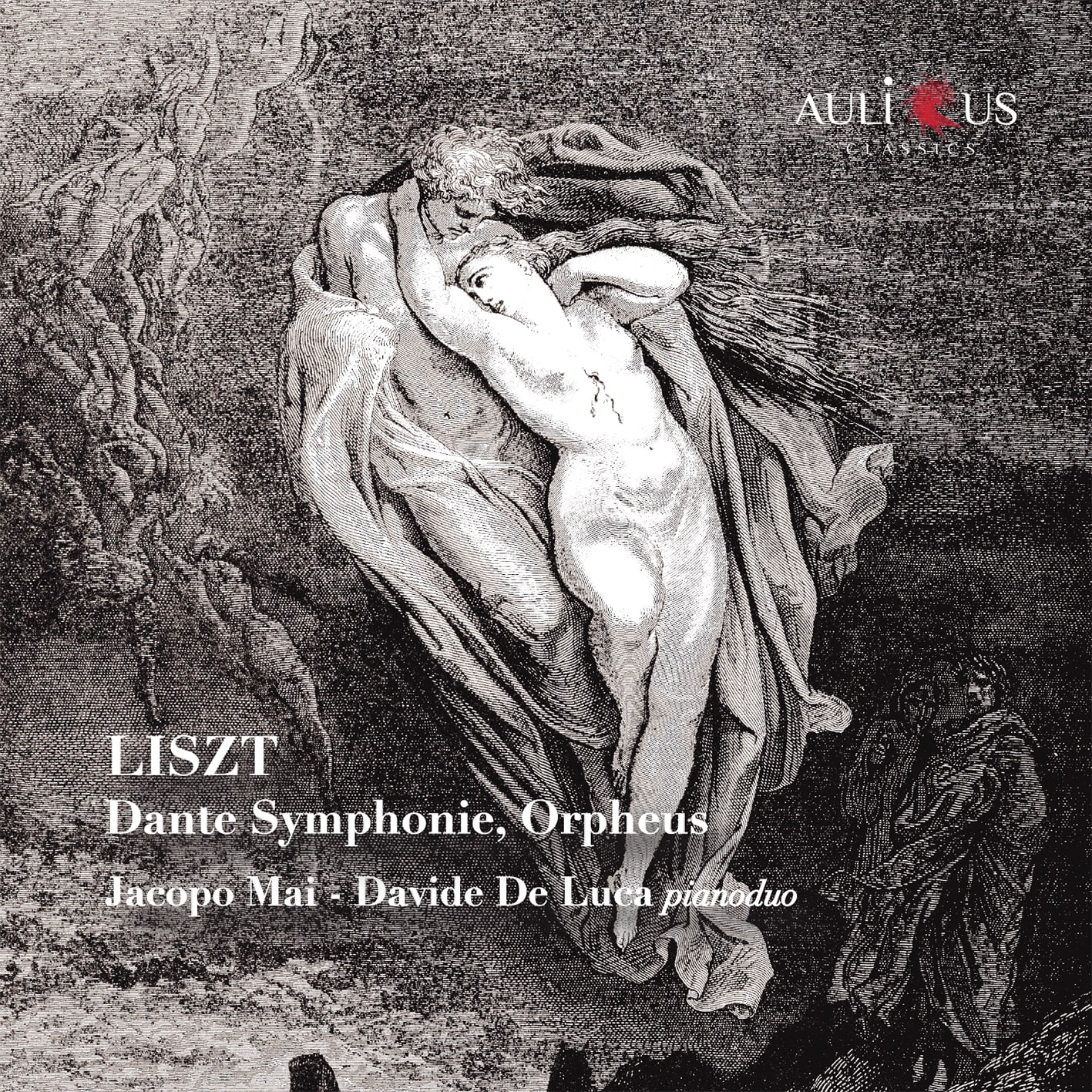ALC 0065 LISZT
Dante Symphonie, Orpheus
Label: Aulicus Classics
Category: Classical Music
Composers: LISZT
Artists: Duo pianistico De Luca/Mai
Format: CD
Cat. number: ALC 0065
Release: January 2022
The choice of the repertoire of this CD has been matured by the Duo Mai-De Luca from the intention to put together in a single discographic work the Lisztian interpretation of the afterlife, seen from two different points of view. The first is that of Christianity, with the Dante Symphony inspired by Dante Alighieri's Divine Comedy; the second is the point of view of classical mythology, with the Symphonic Poem "Orpheus". This is followed by a brief historical preface by pianist and musicologist Ettore Candela. In 1948 Liszt left Paris for Weimar as court master. In Goethe's city he had the opportunity to deepen his knowledge of non-piano musical materials, in particular the orchestra, and to mature his own conception of symphonic music "in program", for which music can never be pure form but always needs a powerful ideal that only poetry, painting and nature could give it, according to the romantic paradigm that goes to describe dramatic events or characteristic figures of history or mythology, as in the short symphonic poem Orpheus, in whose preface the author identifies in the figure of the mythical singer the symbol of the civilizing force, by extension attributable to music in particular. Liszt writes: "...Orpheus, that is, Art, must scatter its melodious waves, its vibrant chords like a sweet and irresistible light.
Orpheus weeps for Eurydice, symbol of the ideal swallowed up by evil and pain." Later Liszt wrote to Wagner that he wanted to dedicate to him a symphonic commentary on the Divine Comedy in three movements, the first two instrumental and the last with the chorus. Wagner in response invites him not to set Paradise to music because, being the absolute kingdom of God, it could not be represented in any way, not even musically, in addition to the fact that he considered the last canticle the weakest of the entire Comedy. He then suggested not to use the chorus. Liszt thus renounced to set the last canticle to music, but not to use the chorus for the sublime concluding Magnificat sung by female voices, in which he finds a serene and transfigured epilogue. In fact, he was not interested in the construction of the comedy as a whole, that is, the climb from the infernal forests to the Empyrean to the presence of God, but some specific episodes and particularly suggestive for their symbolic value, ethical and religious, which can express musically the eternal dichotomy between good and evil. The Symphony was completed in 1856 and is divided into two parts: L'INFERNO (Slow, Allegro frenetico. Andante amoroso) PURGATORIO (Andante con moto. Lamentoso), plus the sublime concluding Magnificat, which is connected to the previous movement. The symphony was transcribed for two pianos by Liszt himself.
Preview Tracks
|
|
1. Inferno |
|
|
|
2. Purgatorio |
|
|
|
3. Magnificat |
|
|
|
4. Orpheus |

